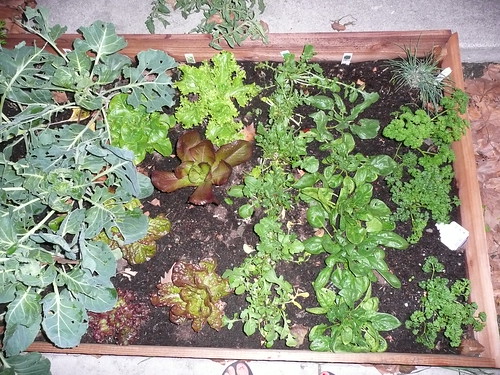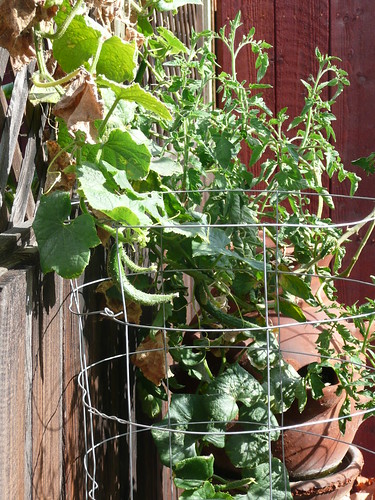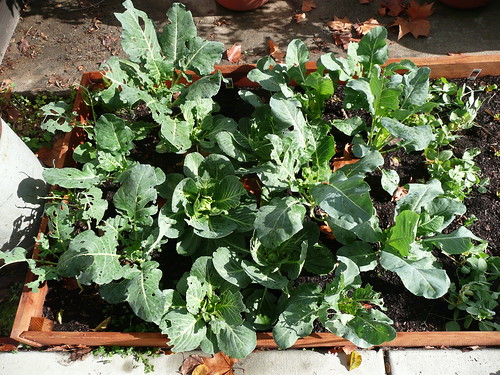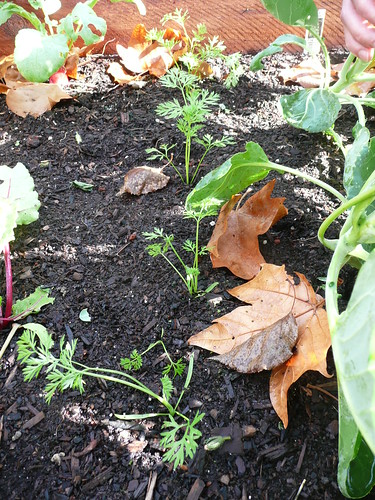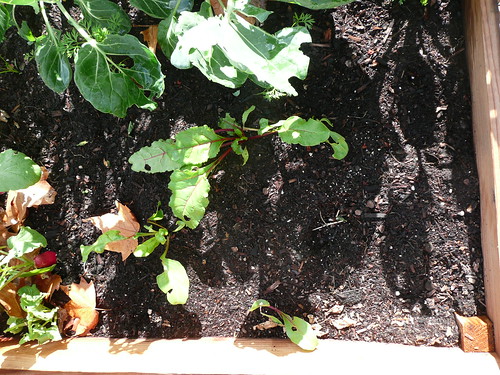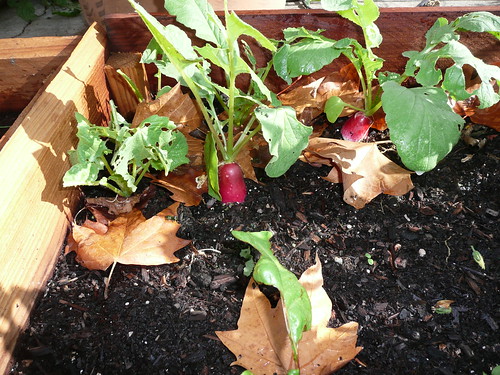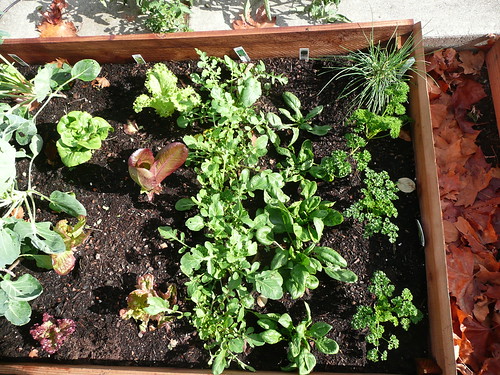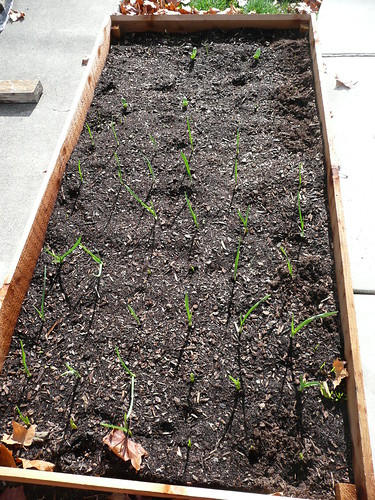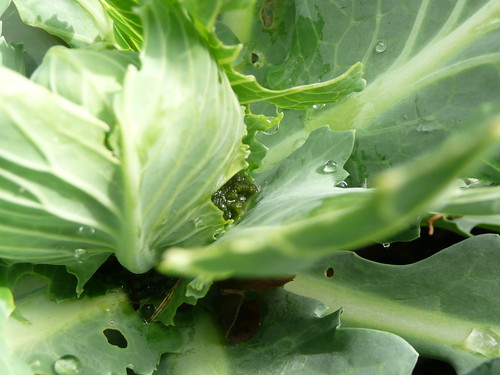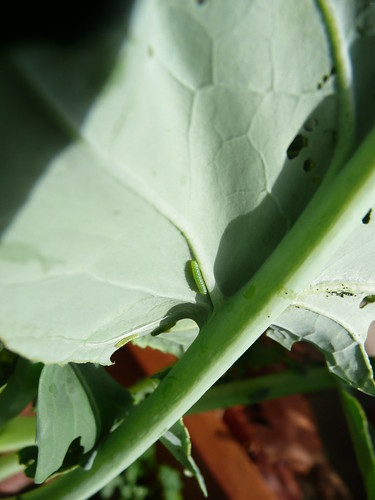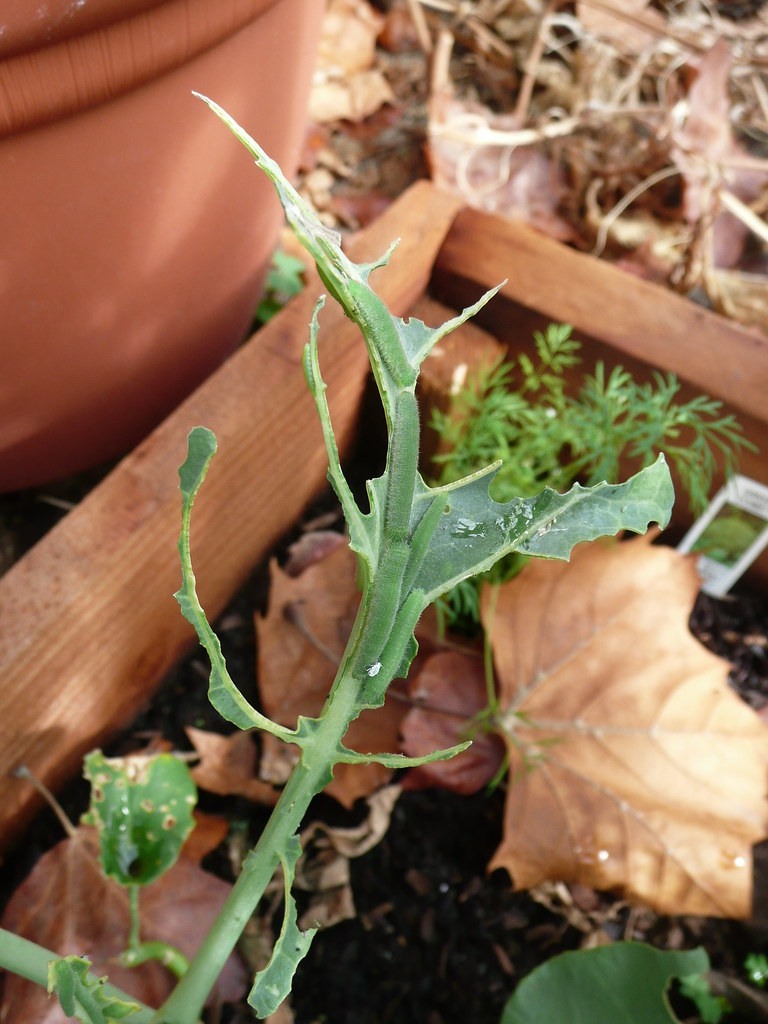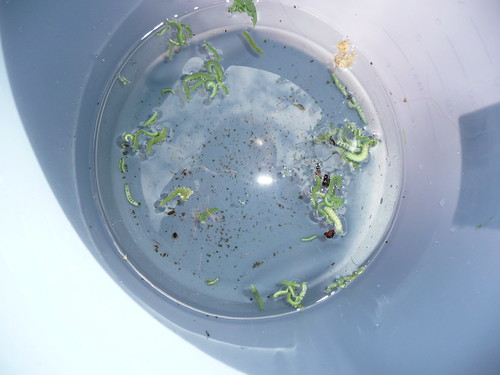Garden Lebanese CousCous
Our 6 arugula plants had generated an impressive amount of regrowth after the harvest for halloween dinner party salads. So, last night, I trimmed again:
The salad section of the garden looked much neater after their trimming (the arugula is to the left of the spinach and to the right of the lettuce, so you can imagine how crowded things were prior to harvest):
We’re home this weekend, so in the interests of making them even neater, I think I’m going to transplant the lettuces in the left row to where the radishes used to be. The brussel sprouts appear to be claiming that section.
Once I had all of the arugula cleaned, I had to come up with a use for it. So, I present last night’s healthy and yummy dinner (it wasn’t a hit with E, just “okay” he said, but I loved it.)
Garden Lebanese Cous Cous
-approx 1 lb arugula trimmed from the garden, washed and broken into bite size pieces and stripped from the stems where they are too broad.
-1/2 cup of parsley trimmed from the garden, washed
-1/2 cup of basil trimmed from the garden, washed
-1 yellow onion, diced finely
-4 cloves garlic, minced
-1 Tbsp red pepper flakes
-3 cups chicken broth
-1 T butter
-olive oil
-1/4 cup sun-dried tomatoes packed in oil
-1 cup Lebanese Cous Cous (much larger than ordinary Cous Cous, the balls are the size of peas, but I’m guessing this recipe would work with ordinary cous cous as well)
-lemon juice to taste
1. Before you prep the vegetables, bring broth and butter to a boil in a pot. Lower to a simmer. Add Cous Cous. Stir. Cover, and allow to cook. Add more broth if it appears to be getting too dry before it’s fully cooked (approx 40 minutes). Remove from heat when cooked through, stir, and allow to cool a bit with the lid off.
2. Prep vegetables. You can chop the parsley and basil together, at the same time.
3. Drizzle some olive oil in a pan over medium heat, add the onions, garlic and red pepper flakes. Stir and sautée until the onions are almost translucent.
4. Add the tomatoes to the pan and break them into smaller pieces with the spoon.
5. Raise the pan’s heat to high. Add the arugula and lemon juice. Stir quickly, sautéing until wilted and the majority of the liquid boils off. Remove from heat.
6. Add the arugula mixture to the Cous Cous pot. Stir. Add the basil and parsely. Stir again.
7. Serve immediately and allow to cool for 5 minutes in the serving bowls.
Enjoy!


